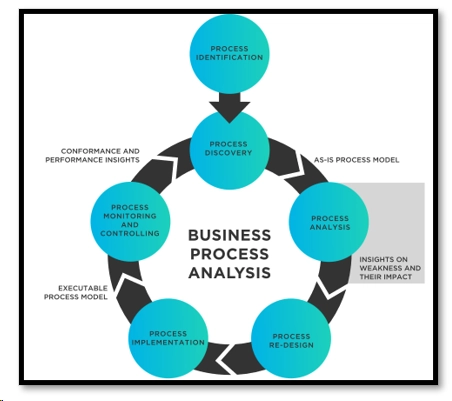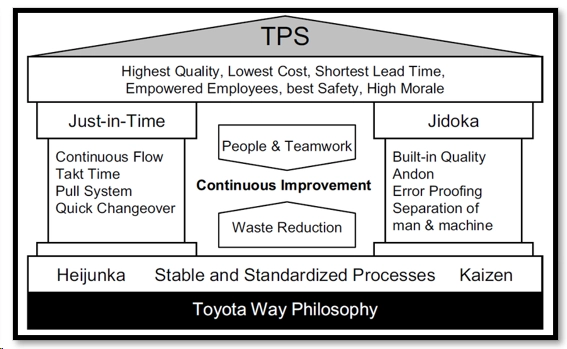Last Updated on October 3, 2024 by Techcanvass Academy
The contemporary business environment is rather saturated and that can mean only one thing – every task must be completed in the shortest possible time. If two are offering similar products and; service-oriented companies, faster, efficient, and effective responses are going to mean more competitive advantage. However, one of the critical tools aimed to help with achieving this transformation is Process Analysis, a business processes improvement tool based on a deep understanding of processes. It is, however, when implemented, particularly from a strategic perspective, that it is likely to expose latent slacks, practical means through which cost cutting can be achieved, and where general productivity may be improved.
It is now time to look at exactly what Process Analysis means and why it is so crucial, as well as how firms can use it to enhance their functionality.
What is Process Analysis?
Process Analysis entails a very comprehensive assessment of affairs within a firm to evaluate the levels of efficiency in the prevailing system. It decomposes the business process into its constituent activities, evaluates each segment in terms of productivity and efficiency, and finds out if there are constraints in the system.
It applies the concept of coupling, through which businesses can determine how each step in a process is related to the next step, as well as identify places through which the process may be weakened or slowed down, or where the quality of output may be diminished. The purpose is always to introduce the best practices that would increase productivity, minimize the level of losses, and maximize organizational performance.

Useful Links – Business Analyst Certification Courses
Process analysis provides importance
Increased Efficiency
The last successful application of the process analysis is to define waste-generating tasks or activities that do not add value. Sustaining is reducing or eradicating these inefficiencies frees up resources that could be channeled to better use.
Cost Reduction
This avoids loss of material and time hence reducing the operating expenses of a firm. Less wastage and improved resource use therefore results in overall large cost savings.
Improved Quality
Many activities are coordinated to guarantee control and compliance with quality demands when analyzing processes. These are areas where there may be shortcomings or a break in service delivery and this element can be adjusted to ensure that the product or service fits the customer’s needs.
Risk Mitigation
Process analysis involves the identification of the weaknesses or the areas that take much time, and as such it facilitates early warning of and planning for preventive measures to be taken before they cause an impact on the business.
Employee Productivity
Since processes dictate how work should be done and accomplished when appropriate or effective processes are implemented, people are more productive with their efforts and focused on adding value to organizations, hence increasing organizational efficiency and employee satisfaction.
Steps in Process Analysis
Identify the Process to be Analyzed
First, it is necessary to choose an activity that has a certain linkage to meeting your organizational goals. This could be an assembly line, a set of a company’s business rules on how to handle customers, or supply chain management.
Map the Current Process
Map an illustration of the present process. These serve in determining the important activities, actors, and decision-makers.
Evaluate Each Step
Examine each step in detail. This made me wonder, are there any unnecessary steps? Has it been observed that some actions are taking longer than others? Is the work that needs to be done split into small and complex enough that it may be rendered automatable in some sense?
Identify Improvement Areas
Based on this evaluation, it is possible to identify potential avenues for enhancing the process. Such changes may mean automating specific processes combining some stages or getting rid of them at all.
Implement Changes
It is after understanding the changes that they should be implemented. Make sure all stakeholders are informed of these changes and supply training where necessary.
Monitor and Optimize
After developing the new process management must monitor its performance regularly. Process analysis is not just a one-time job; it should be monitored over and over to guarantee that the process is still effective today.
Useful Links – Business Analyst Certification Courses
Real-World Example: How Toyota Uses Process Analysis
One of the finest pieces of work on process analysis has its origin at Toyota. The main strategy that has shaped Toyota Company in the world automotive market is the process improvement with the use of the Toyota Production System (TPS). Toyota in the 1950s applied several lean manufacturing techniques and started active continuous improvement in automotive production. The company relied on process analysis to dispose of the forms of wastage known as Muda in lean language, enhance the production process, and raise its efficiency.

For instance, Toyota saw that one of the most critical constraints that need to be resolved is having a way of managing inventories. In examining the process, Toyota moved from a forecasted ‘push’ system to a demand ‘pull’ system where cars would be produced based on actual orders. This change not only solved the problem of excessive stock but also guaranteed that vehicles were manufactured much closer to consumers’ demand.
Currently, the TPS is considered one of the best production systems in the world, and the company still functions as a reference for enterprises striving for optimization.
The culture of process analysis entails some important benefits
Streamlined Workflows
These change to make processes leaner, faster, or more efficient.
Cost Savings
This process alters the employee’s productivity, and quality of output and improves the profitability of the organization to a large extent through the reduction of operational expenses.
Customer Satisfaction
The net effect of all these is improved quality of service hence improved output that leads to customer satisfaction.
Innovation
There are various possibilities involved in the process of process analysis and it finally leads to new ways and ways to do things better making the levels of innovation and competitiveness higher.
Useful Links – Business Analyst Certification Courses
Scalability
Different businesses that operate with lean means have benefits in terms of temporarily increasing the process scale while minimizing toll costs.
Process analysis is not limited to big business organizations; business organizations of all sizes can benefit from the improvement of their processes. Several strategies here mean that organizations can receive corrections for specific areas thereby getting rid of hitches that lead to low productivity. As evidenced by Toyota’s experience, high-quality process analysis outcomes are capable of making a business unique in a given market.
It is, therefore, clear that to achieve sustainable growth in a business, as well as to attain long-term goals, the analysis of processes is a must-do tool.


